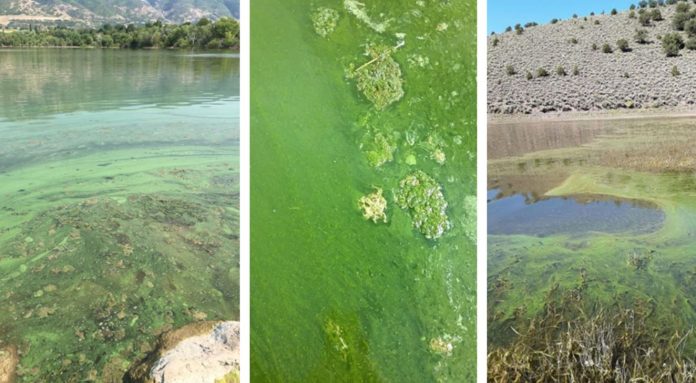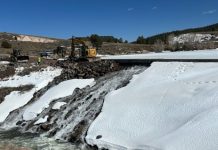UTAH, Aug. 1, 2023 (Gephardt Daily) — Garfield County is the latest area to learn of an algal bloom, potentially dangerous to people and pets that ingest the water, by accident or on purpose.
“It’s been brought to our attention that Panguitch Lake currently has some highly toxic algae levels,” the Garfield County Sheriff statement says.
“We are being told that (the) bottom line is don’t go into the water, it is also toxic to dogs. Please use caution while at Panguitch Lake.”
That lake is one of eight in Utah that are currently known to have harmful algal blooms (HABs), which can produce dangerous toxins that pose serious health risks to humans, pets, and livestock. They may also contain waterborne pathogens, which can make humans sick.
The list also includes Matt Warner Reservoir, Crouse Reservoir, Highland Glen Reservoir, Utah Lake, Yuba Lake, Otter Creek Reservoir, and North Creek (right fork). Those are marked in orange on the map below.
Marked in yellow are locations with health watches, which may have the beginnings of algal blooms or waterborne pathogen problems. The blue dots simply mark water bodies that are being monitored.
Click here to view an interactive version of the map below. The website version has more information on specific locations and it undergoes updates.
“Harmful algal blooms generally occur in standing water such as reservoirs, lakes, or ponds,” the Utah Department of Environmental Quality (DEQ) website says. “The appearance of HABs varies widely: blooms usually appear in various shades of green or blue, but may also be red, pink, white, gray, or purple. The texture of blooms may resemble spilled paint, green globules, surface scum, foam, floating mats, or grass clippings.
“Some blooms may not be visible on the surface of the water at all times because they rise and fall in the water column during the day. HABs may quickly move or disperse depending on temperature, wind, and weather.
“In some instances, HABs occur in rivers. These blooms grow as mats on the bottom of the river, attached to cobbles, rocks, or plants. They may also detach and float downstream.”
To learn more or check a water body near you, check the DEQ website.






